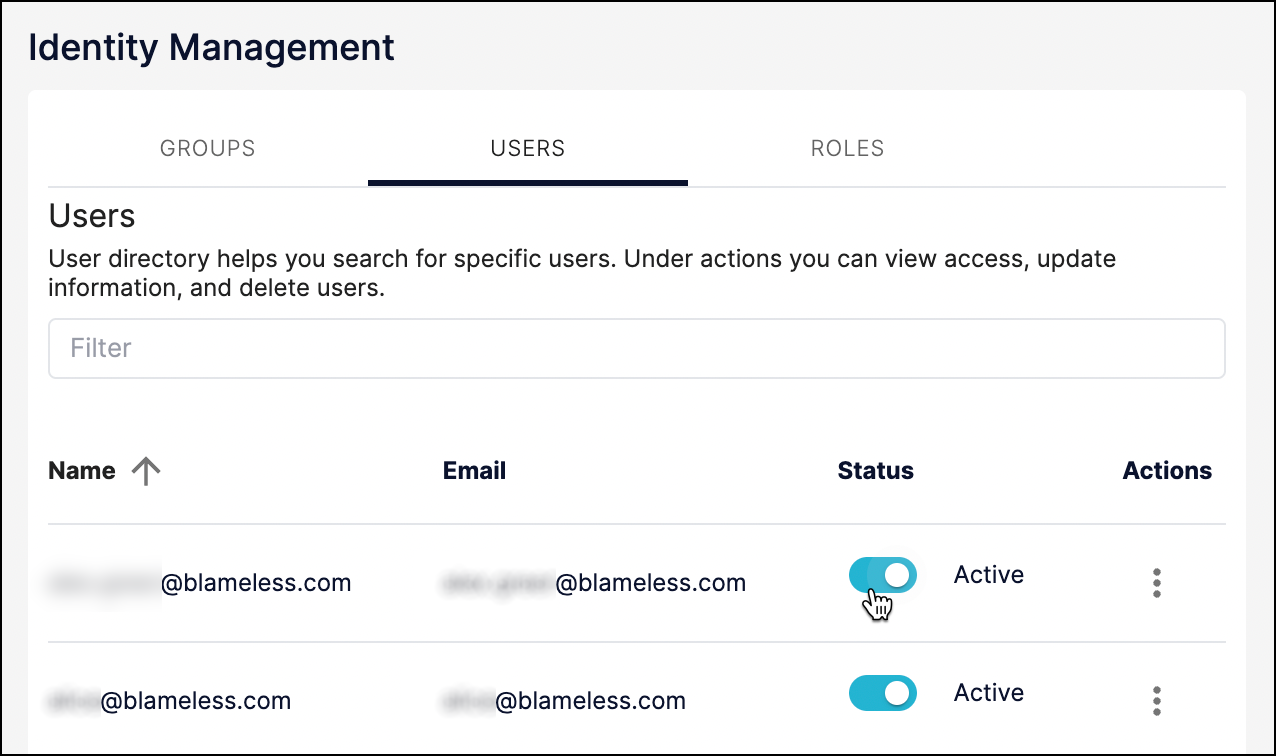Slack - Customizable start incident modal

Feature Releases
Slack
Customizable start incident modal
Incident responders can now be optionally prompted to enter incident tags at the start of the incident creation process in Slack, effectively helping users capture and share context about the incident as soon as possible.
The list of tag categories (aka custom fields) displayed dynamically changes based on the incident type selected by users in the incident modal.
In the graphic below, the tag selection feature is available after starting a new incident by typing /blameless start incident in Slack.

After the incident is started, incident responders can still update and add more tags to the incident directly from within the incident channel. This is done by entering /blameless add tags in Slack.
To leverage this new capability, ask your Blameless administrator to do the following:
In Settings → Tag Management, configure selected tag categories to be visible as custom fields at the start of an incident in Slack. If no incident type has been selected, the tag category field is automatically visible to any selected incident type.
Incident Types
Enhanced incident type setting layout
The layout of the incident type setting page has been updated to provide a faster and more reliable user experience when creating new incident types. In addition, settings are now grouped together into expandable / collapsible sections and the order is aligned with an incident's workflow to facilitate ease of management.
The setting categories are as follows:
- Manage Incident Details
- Invite & Notify Team Members
- Trigger Alerts
- Set Affected Services
- Create Ticketing
- Assign Roles & Tasks
- Create Retrospective Reports
A few additional enhancements have been made available to improve your experience with incident types:
- To gain faster access to the configuration page for a selected incident type, you can directly click on the incident type from the list.
- In case you have a long list of incident types, we make it easier to find your incident type by searching and sorting your incident types by name.
- If you forgot to proactively click Save, you will be automatically asked if you want to save your changes before leaving any tab of the incident type configuration page.
Identity Management
Self-serve activate & deactivate users
As your team evolves, it is often necessary to activate and/or deactivate users ⏤ Blameless's new user status toggle feature now enables you to do this on demand.
Deactivating a user relinquishes their access to Blameless but does not delete the user profile, giving you the option to activate them again later.
To toggle user status:
- In the sidebar of the Blameless UI, select Identity Management, and then select the Users tab.
- Under the Status column heading, select the toggle switch to activate or deactivate a user as needed.
- In the confirmation dialog box, select Deactivate or Reactivate.

Bug Fixes
Slack
Type ahead search when adding tags to incidents in Slack is not working
Issue:
When adding tags via Slack, type ahead search (i.e., autosuggest) was no longer possible in Slack making it difficult to search for specific tags to be added to an incident.
Fix:
The type ahead search capability for tag categories in the Add Tags dialog box in Slack has now been restored for tag categories that have predefined tags, whether users select only one single tag or multiple tags.
Tasks would occasionally be duplicated when completed
Issue:
When completing a task in Slack, an identical message confirming the completion of the task would occasionally and randomly be displayed multiple times.
Fix:
This rare issue typically occurred when multiple tasks were rapidly being completed at nearly the same time. The processing of multiple tasks being completed nearly concurrently has been improved to prevent multiple appearances of the task confirmation message.
Jira
Jira incident ticket is not created when starting a new incident
Issue:
When the Reporter Jira system field was set as a required Jira field, the creation of incidents would fail. However, when the Reporter field is not required, Blameless correctly sets it to the default Jira user account used to integrate Blameless with Jira.
Fix:
If the Reporter Jira system field is set as a required Jira field, the creation of incidents now succeeds as Blameless does set its value automatically to the default Jira user account used to integrate Blameless with Jira, the same way it is set when the Reporter field is not required.

.svg)